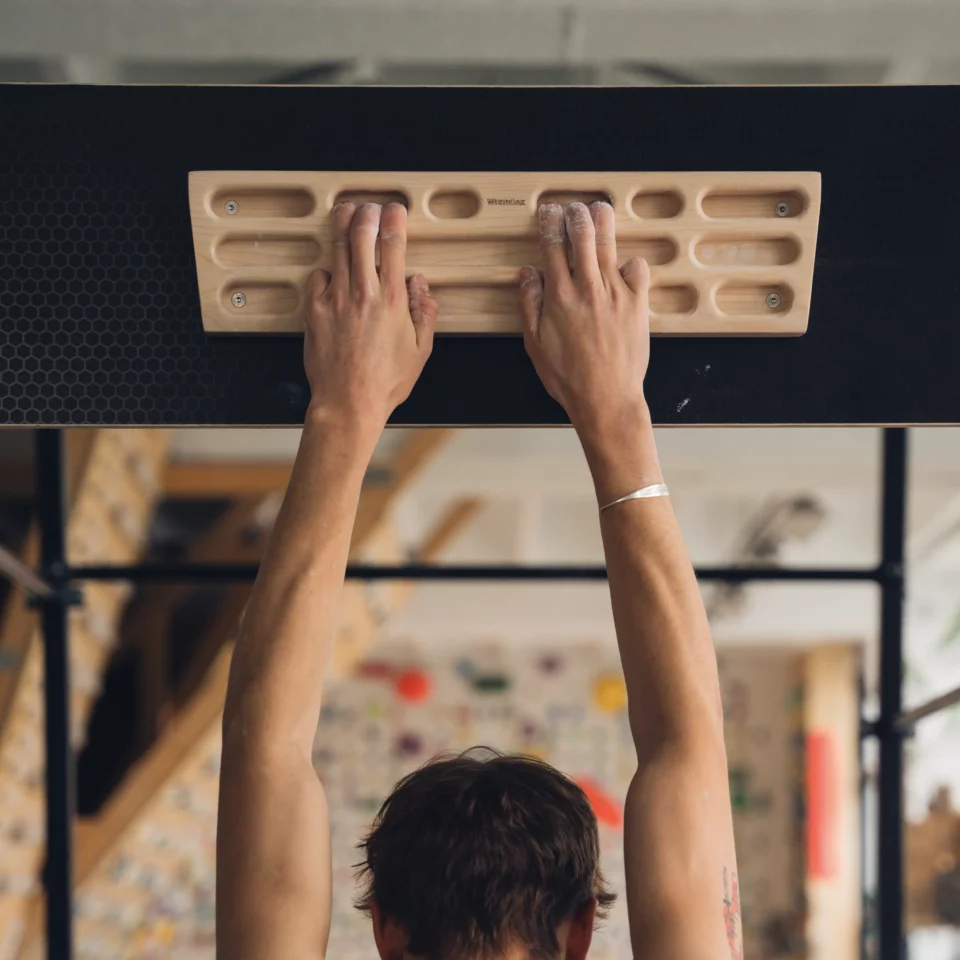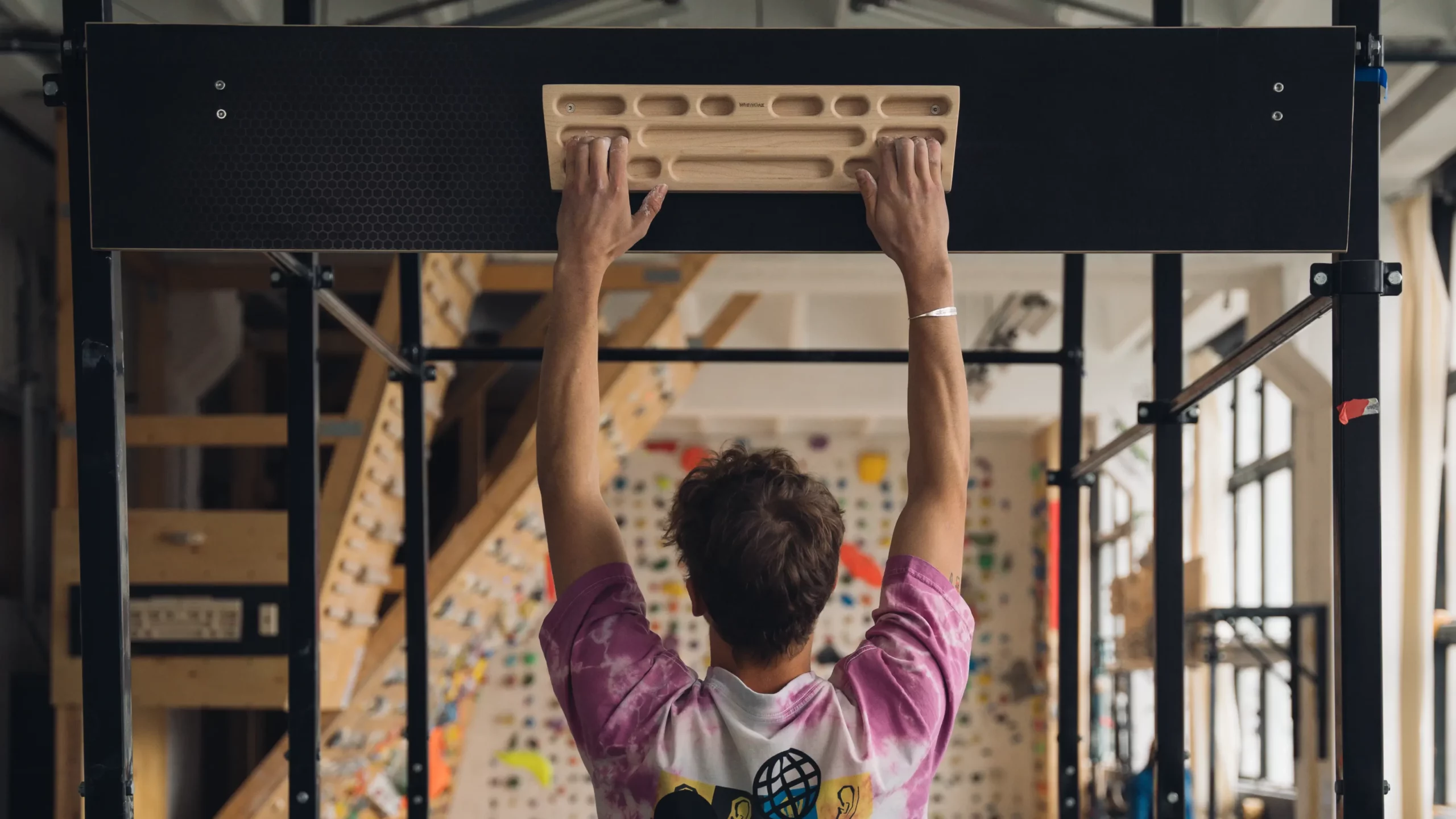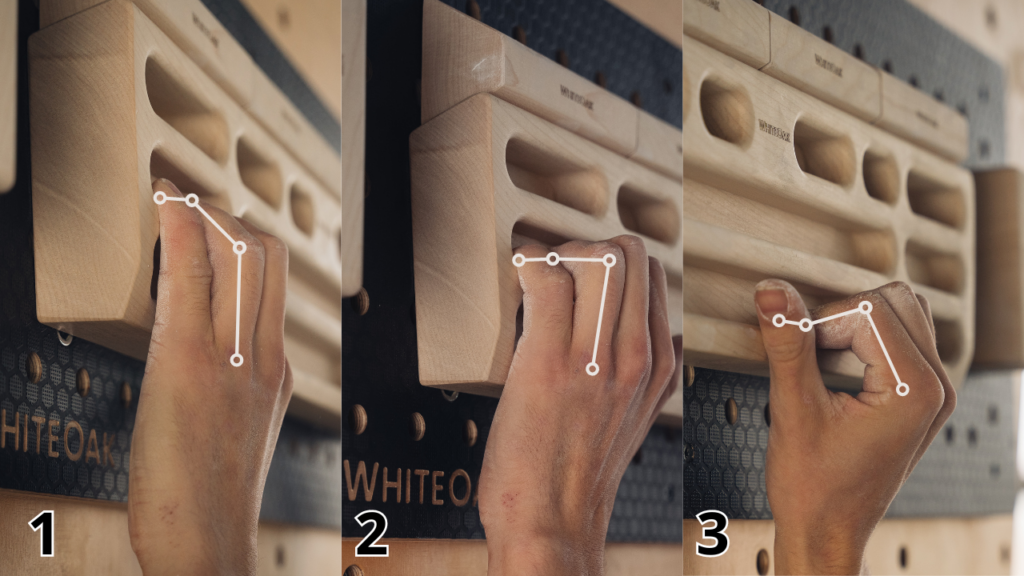€0
Series: the basics of grip training: Ch. 2-Chapter for beginners and the basics of safe grasping

Series: the basics of grip training: Ch. 2-Chapter for beginners and the basics of safe grasping
In the climbing community, the belief has been established that the grappleboard is a training device reserved for advanced climbers, and that for less experienced riders, training of this kind can be very injurious. There is a lot of truth in this belief, and it stems from the fact that it is really easy to get injured unless you follow the basic rules of safe progression.
The most common injuries during training on the grappleboard are trochanter injuries. Tendons are fibrous structures that hold the flexor tendons to the finger bones, allowing them to bend. When we climb and grasp smaller holds (or those that are large but inadequate), the trocars are put under a lot of stress and can become strained or break, most commonly in the case of the ring finger and A2 trocars. [1]
If you are reading this article, it means that you are approaching the subject sensibly. Be realistic in assessing your capabilities and build strength gradually. Jumping to more difficult holds before you’re ready for them is a quick way to an enforced hiatus.
The time you spend on gradual progression will be much shorter than the time you will lose in treating an injury.
Consider starting your training on a gripboard if you answer yes to the following questions:
-Are you already mastering and actively applying most of the basic legwork techniques?
-Is the strength of your fingers a major limiting factor in your climbing goals?
-Can you listen to your body and objectively assess the degree of recovery?
-Do you have the motivation for a workout that is not as interesting as a climbing session?
-Are you looking for an effective workout that can be done without leaving home?

Basic types of grip:
One of the primary safety factors when training on a grapple board is to consciously choose the depth of your grip and the type of grip involved. Different grips exert different levels of stress on fingers and toes. It is worth avoiding grips that generate too much tension and can lead to injury. Remember that the closed grip is particularly injury-causing and should actually never be used when training on a gripboard. Use it only when absolutely necessary during climbing. [2] If you feel that the descent to a shallower edge requires you to “tighten the bow” simply train still on a more comfortable, deeper edge.
- Keep your fingers together: do not separate your fingers, avoid grasping grips separated by a “bridge”.
- Use all fingers: If you are training with four fingers, carefully place all fingers on the grips. Don’t underestimate the little finger. When using twos and threes, the remaining fingers also stay together, without “ditching”
Main Types of Grasping
1: Open Grip (Open Hand)
The open grip involves placing three or four fingers on the edge and pulling the hand down. Instead of bending the fingers at a 90-degree angle, the hand hangs freely and the fingertips hook over the edge, forming an inverted “J” shape. This type of grip is much less taxing than the others, making it the safest position for training on the gripboard. This means that the second joint of the fingers should be below or at the level of the tip of the finger. For beginners, I recommend variant one (below the tip of the finger).
2: Half Crimp grip.
The half-open grip can be considered the basic type of grip for medium and smaller tie-ins. This is a position with a low risk of injury, and the specific strength built in this position also benefits other types of grappling. Make sure you engage your hand and thumb, but don’t wrap them around your fingers or allow the distal phalanges to become overstretched.
3: Closed Grip (Full Crimp)
A closed grip, also known as a bow or boat, puts the most stress on the tendons and tendons. This is the most injury-causing type of grip, so it should never be used when training on a gripboard. A closed grip should be used only when absolutely necessary during climbing. Avoid using it in training to minimize the risk of injury.
The details and alignment of the successive phalanges for each type of grip discussed are shown in the graphic below

Additional tips
- Listen to your body: Make sure you are well rested before your workout.
- Warm-up: light cardio, Skipping or running in place. Although it’s not a toe warm-up, an all-around warm-up helps it get blood flowing throughout the body, which increases the flexibility of the toe flexor tendons, allowing them to better absorb force.
- Warm up your fingers: before starting your workout, perform a series of warm-up exercises dedicated to your fingers. Clenching fists, “water shaking” movement, finger pressure on the inside of the hand with a gradual increase in pressure are just a few examples
- Be aware and honest in evaluating your movements and training: Know your limits.
- Take notes of your training sessions and note any “minor injuries.“ This is not only crucial for progress, but also helps you identify which movement caused the pain. You can go back and not repeat the same pattern. Try something else. Rule of thumb: “fatigue is fine, but acute pain is NOT.” If you feel something disturbing during the training sequence, stop it.
- Don’t neglect the little finger.
- Rest accordingly between repetitions and series. Again, listen to your body.
Summary
A conscious approach to training on the handhold can significantly improve climbing performance, even in less advanced climbers. The key is to always keep safety in mind, using the right grips and avoiding the most injurious ones. Understanding which holds are safe and how to perform them correctly is the foundation of effective training. When in doubt, it is always a good idea to consult a more experienced climber, instructor or section leader. This will minimize the risk of injury and ensure your long-term climbing development. The right approach to training not only increases efficiency, but also allows you to enjoy climbing without worrying about injury.
Sources
- Eric J. Hörst, Training 4 Climbing, 2016.
- Sender One Climbing LLC, 2024.
- Eric J. Hörst, The Ultimate Guide to Hangboard Training for Climbers.
- Lattice Climbing; Open or Half Crimp for Performance Profiling in Climbing?
